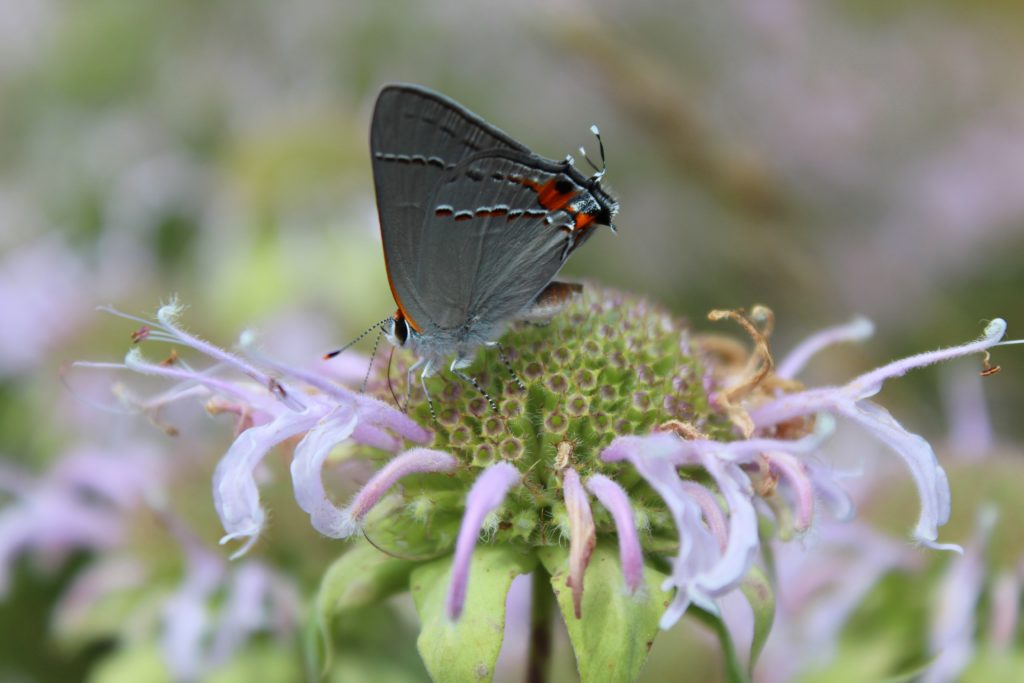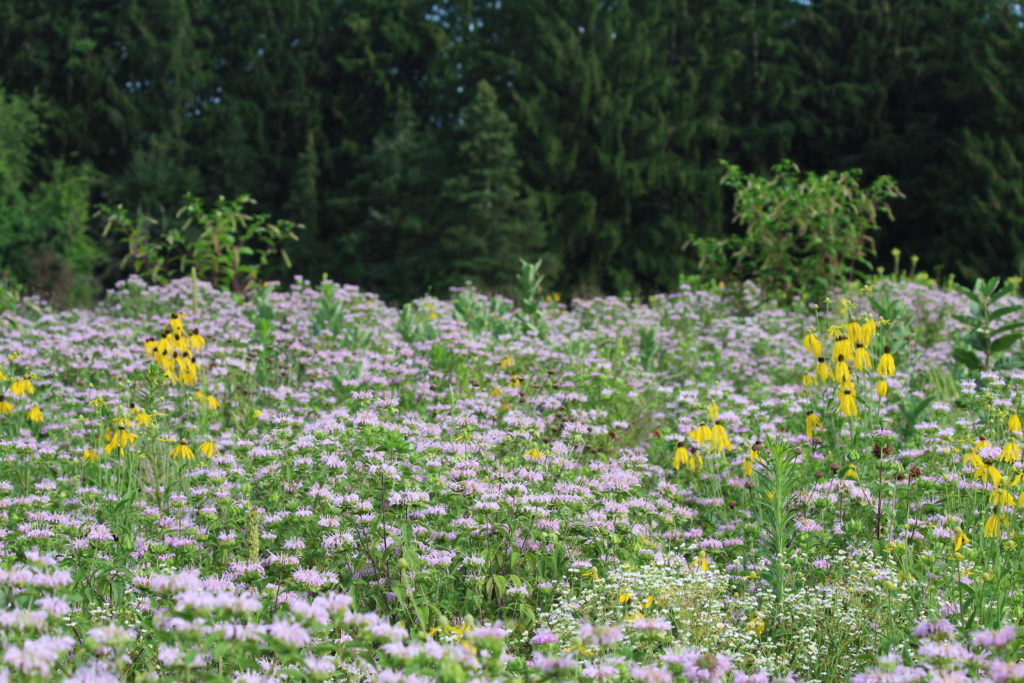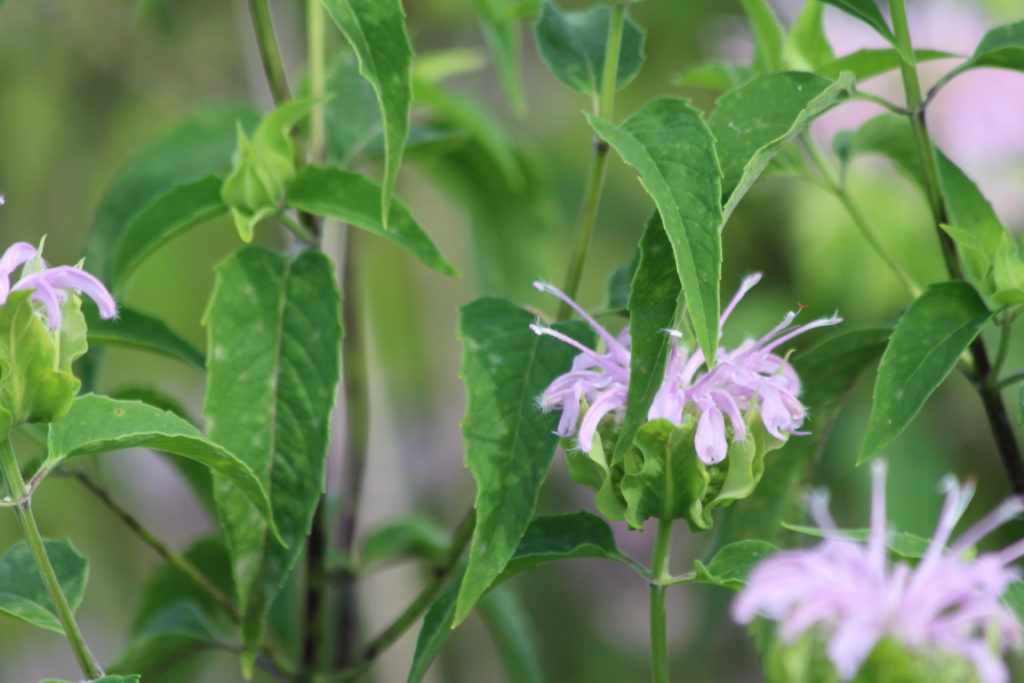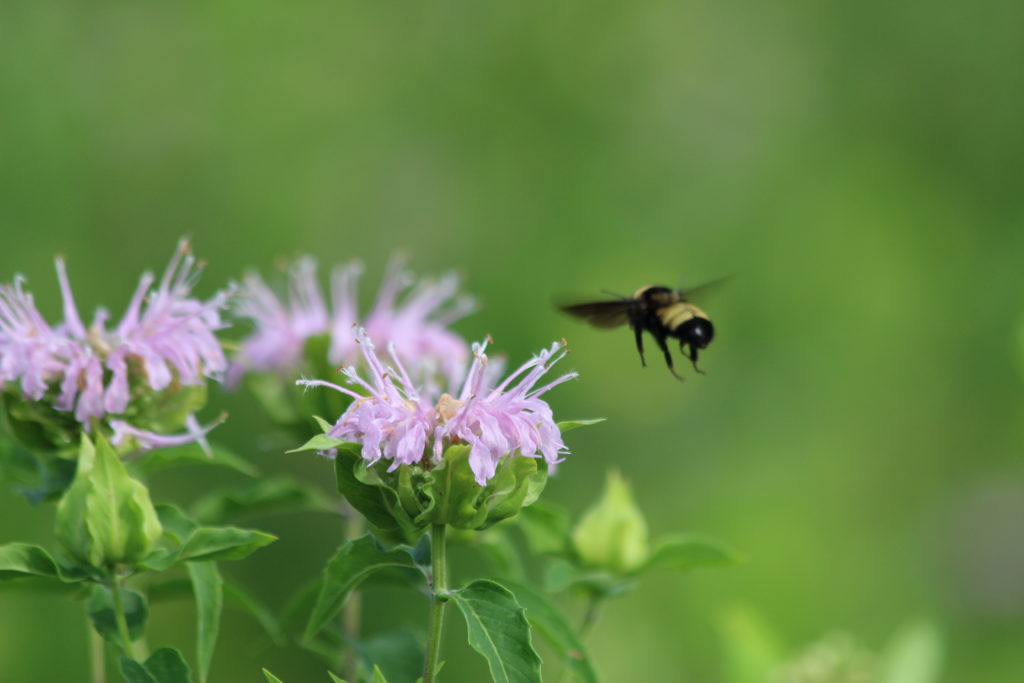
What’s in Bloom | Bee Balm
July 20, 2020
Bee Balm (Monarda fistulosa)
Bee Balm, also known as Wild Bergamot, is a perennial herb native to most of the United States and Canada. It grows in open forests, meadows, and ditches, and is tolerant of full sun or part shade. Bee Balm spreads through rhizomes so its growth can be contained by dividing large clumps, which is beneficial to the health of the plant. Once clumps are divided, they can be replanted elsewhere if desired.
Bee Balm is a member of the mint family (Lamiaceae), so it had square shaped stems. The green leaves are about 4” long, oppositely arranged, lanceolate shaped, are slightly toothed, and most notably, are strongly aromatic (comparable to the scent of oregano).
Blooms appear singularly atop 2-4’ tall stems from June through September. The showy flowers are white, pink, or lavender colored and resemble shaggy pom-poms. The flowers are tubular and fragrant, typically about 2 to 3” in diameter.
Historically, Bee Balm was used by Native Americans for a variety of medicinal purposes.
Benefits to Biodiversity | Bee Balm is a great addition to any garden because of its beautiful and beneficial flowers! The fragrant leaves and stems make it resistant to deer and rabbits, but the blooms attract many pollinators. Bees, butterflies, hummingbirds and other pollinators benefit from these native flowers and it is rare to see these plants without an exciting buzz of activity.



Bombus auricomus visiting Monarda fistulosa
Resources: USDA and NRCS, Ladybird Johnson Wildflower Center